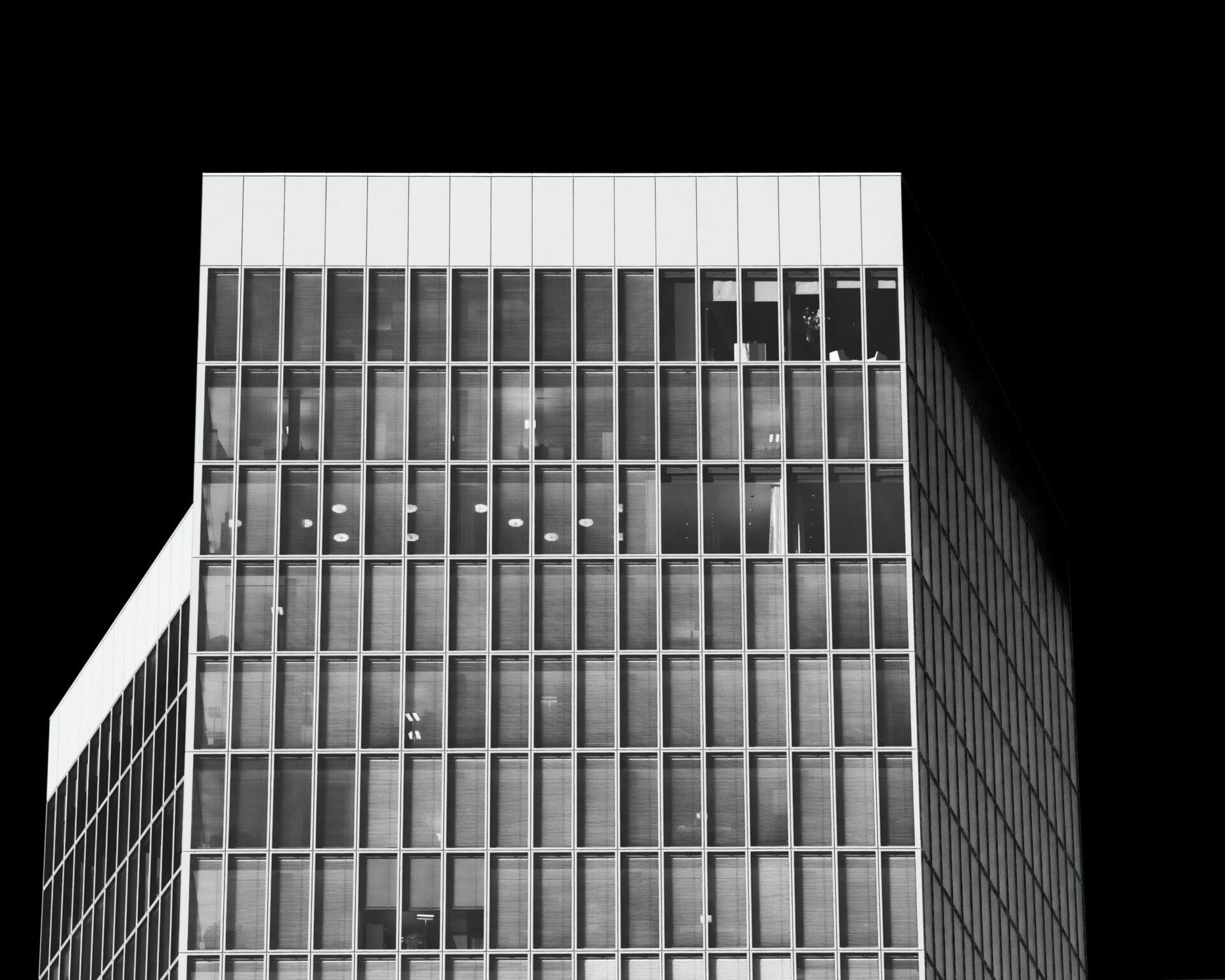
High-Rise | Ballard's dark, inner space
Author
Year
Format
How do buildings influence human behavior? With his dystopian novel High-Rise (1975), English writer James Graham Ballard, known as ‘J.G’, tries to answer this question, focusing on a luxury high-rise on the outskirts of London, in present-day Canary-Wharf. The book follows the abrupt escalation of violence, madness and psychosis of the two thousand residents of this modern – especially for the 1970s – forty-storey tower block.
When a building turns into a brutal jungle
Three characters are at the centre of High-Rise. There is Robert Laing, a recently-divorced doctor and lecturer who moves in on the 25th floor following his sister’s advice. Almost twenty floors below lives Richard Wilder, a brutal and hot-headed documentary filmmaker, with his pregnant wife and their children. At the top of the building, there is the realm of Anthony Royal, the architect of the high-rise: an imperious, almost grotesque, penthouse, which is spacious enough to fit a small field and a horse.
The characters of Laing, Wilder and Royal are members of a so to speak “virtually homogeneous collection of well-to-do professional people – lawyers, doctors, tax consultants, senior academics and advertising executives”. They all live in this luxurious “vertical city” designed to provide any sort of commodity: a supermarket, a bank, a swimming pool, a hair salon and a school.
Life runs smoothly and seems to be perfect. Yet, petty grievances among neighbours soon culminate in an orgy of irrational behaviour and unjustified violence, a warfare between floors. The tower block thus turns into a twisted adult mirror of William Golding‘s Lord of The Flies and Janne Teller‘s Nothing, with no resolution or moral principle.
Living in gated communities
High-Rise is the final book in a quartet of novels including The Atrocity Exhibition (1970), Crash (1973) and Concrete Island (1974). All these four experimental and dystopian books explore the psychological experience of living in gated communities. When he was a child, Ballard became a prisoner of war in a Japanese camp. As he always claimed, that experience was enjoyable and rather inspiring. “Perhaps more than any other writer, he focused on his characters’ physical surroundings and the effects they had on their psyches“, wrote journalist Chris Hall in The Guardian.
In High-Rise, the tower block is more than just a setting for the novel. It is a disturbing yet absorbing entity. As soon as they move in, all inhabitants “forget their jobs in the outside world, cut contact with friends and relatives, and descend into a war of all against all“. To the point that they find themselves eating dogs, as suggested in the opening sentence of the book:
Later, as he sat on his balcony eating the dog, Dr Robert Laing reflected on the unusual events that had taken place within this huge apartment building during the previous three months.
Inner and outer space
Together with Michael Moorcock, Brian Wilson Aldiss, and Ursula K. Le Guin, Ballard was a member of the New Wave, a movement in science fiction that flourished in the 1960-1970s. It encouraged and emphasized experimentation, “literary” sensibility, and social commentary, as opposed to Golden Age that focused on hard science.
In his 1962 manifesto titled “Which Way to Inner Space” and published in the avant-garde science fiction magazine New Worlds, Ballard wrote:
The biggest developments of the immediate future will take place not on the Moon or Mars, but on Earth, and it is inner space, not outer, that needs to be explored. The only truly alien planet is Earth.
Similarly, in High-rise there are no hostile mysterious creatures and “outer” space. Everything happens within the building and concerns its dwellers, who are the only, truly aliens.
Ballardian
Ballard, who died in 2009, was labelled “the most original English writer of the last century“. His literary production even gave rise to the adjective “Ballardian”, which means:
Resembling or suggestive of the conditions described in J. G. Ballard’s novels and stories, especially dystopian modernity, bleak man-made landscapes and the psychological effects of technological, social or environmental developments.
Collins English Dictionary
Both his most famous novels – Empire of the Sun and The Crash – were turned into films, directed by Steven Spielberg and David Cronenberg respectively. In 2015, English filmmaker Benjamin Wheatle adapted High-Rise into a movie of the same name.
Tag
Buy a ☕ for Hypercritic









